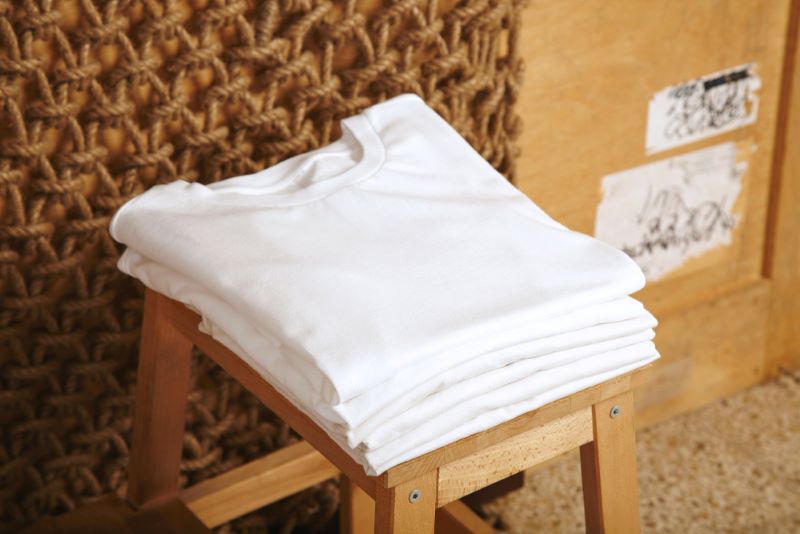
With the rise in screen printing companies, it’s as easy as a few clicks to get a custom t-shirt. However, high-quality screen printing is a little harder to come by. If you want to use the shirts as merchandise or a marketing tool, they must turn out as you intended. Spacing issues, the wrong font, or a poorly placed logo can turn your brand into a joke or viral meme. It’s essential to review the following common mistakes when ordering custom apparel and what steps you can take to avoid them:
1. Choosing The Wrong Print Technique
Screen printing is a time-perfected, long-lasting method for your custom t-shirts. Due to the screen production, it becomes the cheaper option, the more t-shirts you print. If you are looking for less than a handful of t-shirts or lots of different colors in your design, you should compare it with digital printing methods.
For many high-volume, monochromatic designs, screen printing is the technique for you, there are many styles and options to select. For example, high-density, gel, flock, metallic ink, and foil are just a few screen printing options to consider. Beyond those options, you need to select a color palette that will help positively influence purchasing decisions; there’s whole color psychology in marketing. Font can affect your brand as well. Choosing a timeless font versus an outdated one can make or break your t-shirt design.
2. Not Exploring Options
While there is default printing apparel, you should explore other options. Not all cotton t-shirts are created equal. There are tank tops, ladies’ styles, v-necks, and hoodies. Depending on the scale, printers can use the same screen for t-shirts and other apparel if you need more than just shirts down the road. Ensure you are exploring all your options before clicking submit on your order.
3. Attempting To Print Copyrighted Materials
Screen printing companies cannot print copyrighted or trademarked designs even if you aren’t attempting to make knock-offs. Common items they will flag are anything Disney-related, celebrities, movie franchises, and sports logos. Although intellectual property laws and regulations protect many other images. The easiest way to avoid this issue is to avoid replicating content and create your own.
4. Creating Elaborate Designs
Even if your design is impressive on paper, it can be too complex to translate in the printing process. A printer has to generate digital files for each color in your design to separate them into individual layers. The press then prints each color one at a time. The colors are layered on each other until your shirts match your design. You may need to reimagine or simplify your plan to make it work for the screen printing process.
5. Forgetting to Proof Your Print
There are a few times you should proof your designs. First, you should review them when you submit them for printing. It sounds basic but spell-check your print. People forget to check the spelling on their t-shirts more often than you think.
Consider your print size. It should be proportionate to the size of the shirts. Too large or small will result in an awkward-looking design, even if it was well throughout otherwise. Double-check your image quality as well. You need a large, high-quality image if you are printing on a t-shirt, approximately 150 pixels per inch at the print size. If you overlook this detail, your shirts will have a pixelated or lower-quality image.
Once you’re satisfied you’ve checked everything, provide clear instructions regarding the shirt sizes, design, and color choices to your print shop. Finally, check your print with a sample print, especially when ordering large amounts. This way, you can ensure that everything translated well in the printing process before replicating it thousands of times.
6. Not Ordering Enough Shirts
Depending on the company you chose to print your design, they won’t save your screens after fulfilling your order. If you need more t-shirts, you must pay again for the initial screen generation cost. It’s always better to order too many shirts than too few to avoid that expensive reorder. Ensure you have the correct counts and add a few more in each size to cover your bases.
7. Choosing The Wrong Screen Printing Company
You can easily avoid some of these mistakes by choosing the right print shop. A reputable company will guide you through selecting the best technique, asking about other apparel options, and fine-tuning your design for their printing process. They will often fix issues with pixelation and low-quality images without even checking with you. They have the experience to recommend which ink or style will make your custom shirts look best.
Take the time to research your options, especially when screen printing in bulk. Screen printers worth their money have cultivated experience and expertise, so you don’t have to know everything. Choosing them will be an investment, saving you time, stress, and money when everything comes off the press without a hitch.
Robert Fisher is the founder and CEO of Thrive Screen Printing and brings extensive experience in the screen printing and fulfillment industry.

